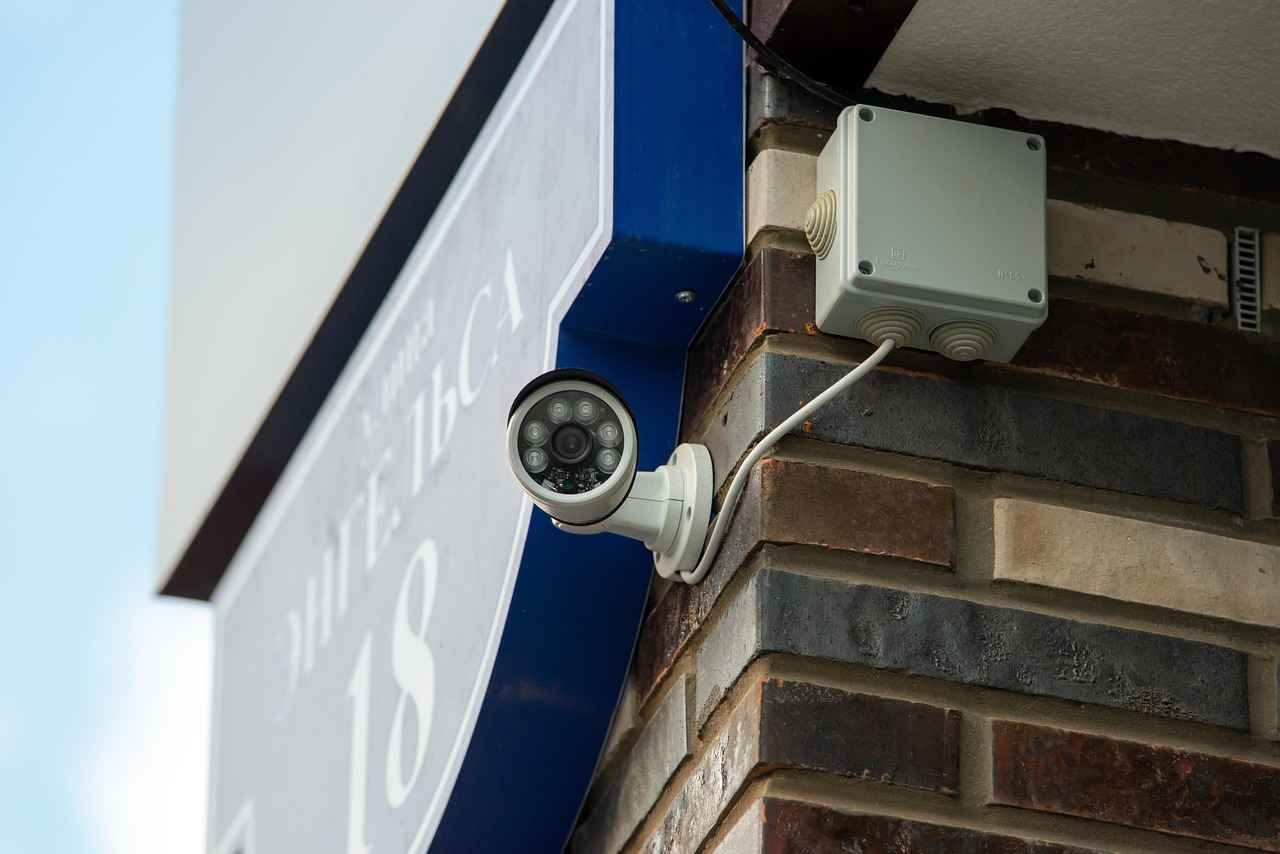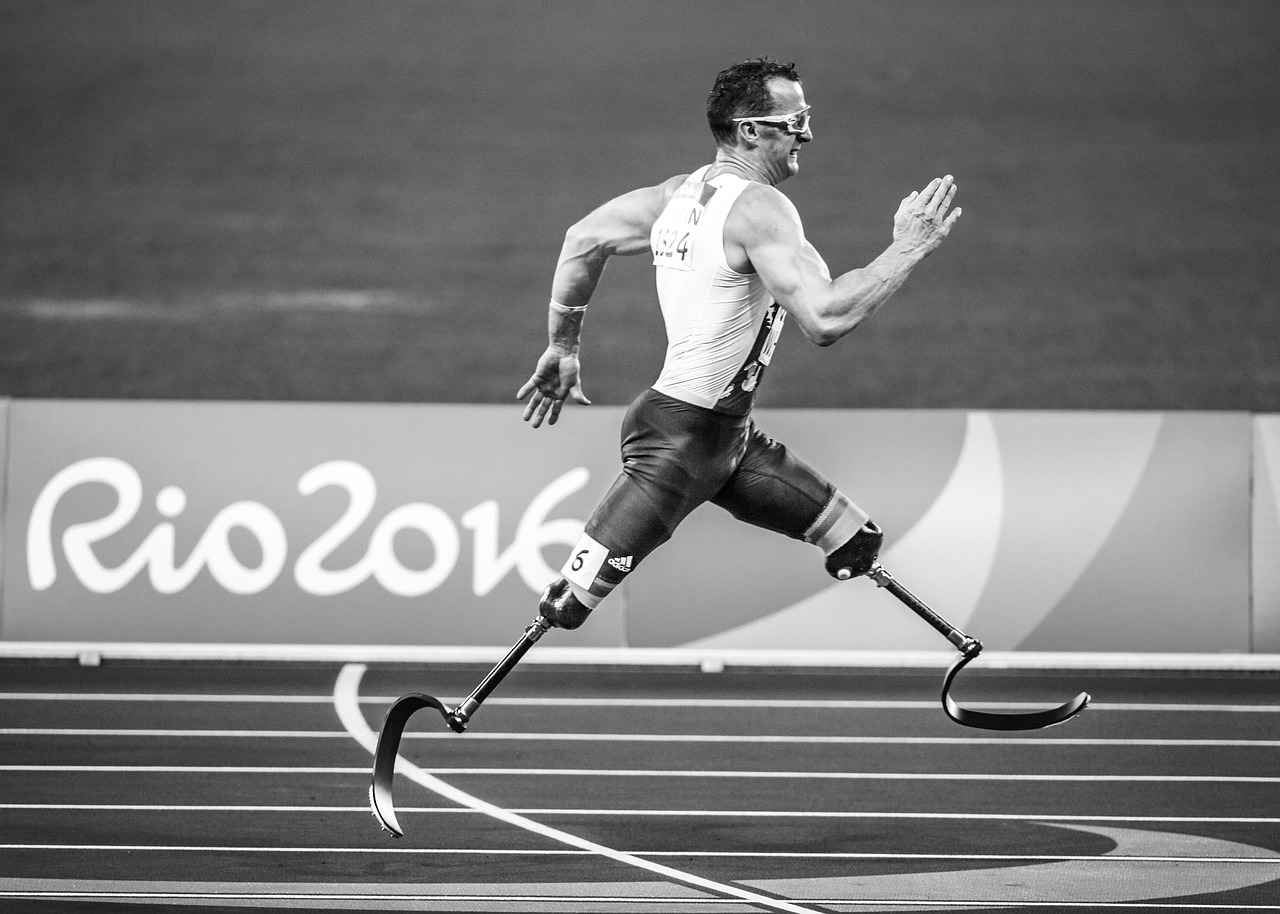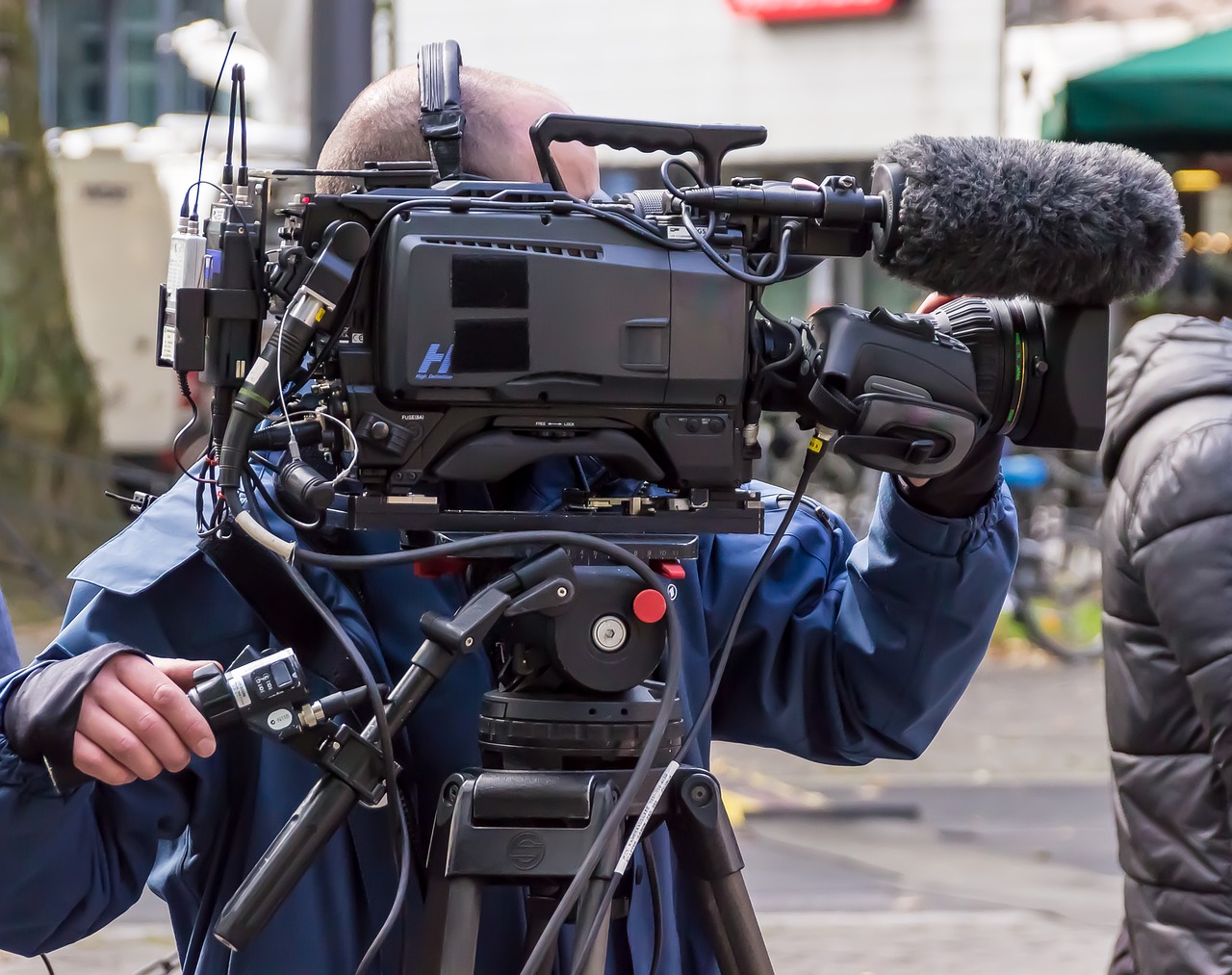This article serves as a comprehensive guide on merging and syncing action camera clips, providing practical tips and techniques tailored for beginners looking to enhance their video editing skills.
Action camera clips are short video segments captured using action cameras, designed to record high-energy activities. These clips often feature thrilling moments from sports, adventures, and outdoor activities, allowing users to share their experiences in a dynamic format.
Merging action camera clips is essential for creating a seamless viewing experience. By combining multiple clips, you can tell a more cohesive story, keep your audience engaged, and produce a polished final product that reflects the excitement of the original footage.
To effectively merge clips, you will need reliable editing software. Some popular options include:
- Adobe Premiere Pro – A professional-grade tool with extensive features.
- Final Cut Pro – Ideal for Mac users, offering powerful editing capabilities.
- iMovie – A user-friendly option for beginners.
- Filmora – Known for its intuitive interface and affordability.
Selecting the appropriate editing software depends on your experience level and specific needs. Consider the following factors:
- User Interface: Ensure it is intuitive and easy to navigate.
- Features: Look for tools that offer the functionalities you require.
- Compatibility: Check if the software works with your operating system.
Follow these steps to merge your action camera clips:
- Import Your Footage: Most editing software allows you to drag and drop files directly into your project.
- Arrange Clips on the Timeline: Organize your clips to establish a narrative flow.
- Apply Transitions: Use transitions for smoother transitions between clips.
Properly syncing audio and video is crucial for maintaining the quality of your footage. It ensures that the visuals align with the sounds, enhancing the overall viewing experience and keeping your audience engaged.
There are several effective techniques for syncing clips:
- Using Visual Cues: Align audio with video by matching actions, such as claps or jumps.
- Leveraging Audio Waveforms: Utilize the visual representation of sound to achieve precise synchronization.
- Automatic Syncing Tools: Many editing programs include features that simplify the syncing process.
Once you have merged and synced your clips, it’s time to finalize your video. This process includes:
- Adding titles and effects to enhance your video.
- Exporting your project in the desired format for sharing.
Being aware of common pitfalls can save you time and frustration:
- Improper syncing of audio and video.
- Neglecting transitions, which can disrupt the flow.
- Failing to export in the correct format, limiting your sharing options.
After finalizing your video, consider sharing it on platforms like:
- YouTube: A widely used platform for video sharing.
- Vimeo: Ideal for creative professionals.
- Social Media: Share clips on platforms like Instagram and Facebook to reach a broader audience.

What Are Action Camera Clips?
Understanding action camera clips is essential for anyone interested in capturing dynamic and thrilling moments. These clips are specifically designed to record high-energy activities, making them a favorite among adventure enthusiasts and sports lovers alike. Whether it’s mountain biking, surfing, or skydiving, action cameras are built to withstand the rigors of extreme environments, ensuring that every exhilarating moment is documented.
Typically, action camera clips are characterized by their ability to capture wide-angle shots, providing a comprehensive view of the action. This feature is particularly useful in sports and adventure videos, where the surrounding environment plays a crucial role in storytelling. The footage is often vibrant and full of life, effectively immersing viewers in the experience.
Moreover, these clips are usually recorded at high frame rates, allowing for smooth playback during fast-paced scenes. This is vital for maintaining the viewer’s attention and ensuring that the essence of the action is not lost. The combination of durability, wide-angle lenses, and high frame rates makes action cameras the go-to choice for capturing adventurous moments.
In addition to their technical specifications, action camera clips are often edited to create a narrative flow that enhances the viewing experience. This involves merging various clips from different angles and syncing them with audio tracks to create a cohesive story. As a beginner, it’s important to grasp the fundamentals of these clips to effectively utilize them in your video projects.
Whether you are a hobbyist looking to document your adventures or a professional aiming to create captivating content, understanding the unique qualities of action camera clips will significantly improve your video editing skills. By mastering the art of capturing and editing these clips, you can transform simple recordings into compelling narratives that resonate with your audience.
As you delve deeper into the world of action cameras, consider exploring different shooting techniques and editing styles. This knowledge will not only enhance your ability to create stunning videos but also help you develop your unique style as a filmmaker. Remember, the key to effective video editing lies in understanding the strengths of your footage and using them to tell a captivating story.

Why Merge Action Camera Clips?
Merging action camera clips is a vital step in the video editing process. By combining multiple clips into a single cohesive video, creators can tell a more engaging and compelling story. This technique is particularly important for action-packed footage that captures thrilling moments, such as extreme sports, travel adventures, or family outings.
When you merge clips, you create a seamless transition between different scenes, which helps maintain viewer engagement. Viewers are more likely to stay interested when the video flows smoothly without abrupt changes or interruptions. This continuous flow enhances the overall viewing experience, making it more enjoyable for your audience.
Additionally, merging clips allows for a more polished final product. A well-edited video reflects professionalism and attention to detail, which can significantly impact how your audience perceives your work. In the realm of content creation, first impressions matter, and a polished video can set you apart from others.
Moreover, merging clips enhances storytelling. By carefully selecting and combining clips, you can craft a narrative that resonates with viewers. This storytelling aspect is crucial, as it helps convey emotions and messages effectively. For instance, in a travel video, merging clips of breathtaking landscapes with action shots can evoke a sense of adventure and excitement.
To further illustrate the importance of merging action camera clips, consider the following benefits:
- Improved Narrative Flow: Merging clips allows you to create a logical sequence that guides viewers through your story.
- Enhanced Emotional Impact: A well-merged video can evoke stronger emotions, making the content more memorable.
- Professional Quality: Seamless transitions and cohesive storytelling contribute to a high-quality final product.
- Increased Viewer Retention: Engaging videos keep viewers watching until the end, which is essential for platforms like YouTube.
In conclusion, merging action camera clips is not just a technical step in video editing; it is a crucial element that enhances storytelling, maintains viewer engagement, and results in a more polished final product. By prioritizing this process, creators can ensure their videos are not only visually appealing but also resonate with their audience on a deeper level.

Essential Tools for Merging Clips
When it comes to video editing, particularly for action camera footage, having the right tools is essential. The process of merging clips can significantly enhance the storytelling aspect of your videos, making them more engaging and enjoyable for viewers. Below, we delve into some of the most popular software options available for merging your clips effectively.
To merge clips effectively, you’ll need specific software and tools that cater to your editing needs. Here are some of the most popular options:
- Adobe Premiere Pro: This industry-standard software offers a comprehensive suite of editing tools. It is suitable for both beginners and professionals, with features like multi-camera editing and advanced color correction.
- Final Cut Pro: Exclusive to Mac users, Final Cut Pro is known for its intuitive interface and powerful editing capabilities. It supports a variety of formats and provides seamless integration with other Apple software.
- iMovie: For those just starting out, iMovie is an excellent choice. It is user-friendly and provides essential tools for merging clips, adding transitions, and basic color grading.
- Filmora: This software is perfect for beginners who want to create professional-looking videos without a steep learning curve. Filmora offers a range of effects and templates to enhance your clips.
- DaVinci Resolve: Known for its advanced color grading capabilities, DaVinci Resolve also provides robust editing features. It is available for free, making it accessible for those on a budget.
Choosing the right editing software can make a significant difference in your workflow and the quality of your final product. Consider the following factors:
- User Interface: A clean and intuitive interface can help you navigate through the software easily, reducing the learning curve.
- Features: Depending on your needs, look for software that offers features like motion tracking, audio editing, and effects library.
- System Compatibility: Ensure the software is compatible with your operating system to avoid technical issues.
Once you’ve selected your software, the next step is to familiarize yourself with its interface. Most programs will allow you to import your footage directly from your action camera or storage device. After importing, you can arrange your clips on the timeline, applying transitions and effects as needed to create a seamless flow.
If you’re looking for free or less complex options, consider online platforms like Kapwing or Clipchamp. These tools allow you to merge clips without downloading software, making them convenient for quick edits.
In summary, selecting the right software is crucial for effectively merging action camera clips. With the right tools at your disposal, you can enhance your video editing skills, creating engaging and polished final products that captivate your audience.

How to Choose the Right Editing Software?
Choosing the right editing software is a crucial step for anyone looking to enhance their video editing skills. With a plethora of options available in the market, it can be overwhelming to determine which software best suits your needs. This guide aims to simplify the selection process by focusing on key factors that will help you make an informed decision.
- User Interface: The user interface (UI) is one of the most important aspects to consider. A clean and intuitive UI can significantly enhance your editing experience, especially for beginners. Look for software that offers a simple layout and easy navigation.
- Features and Functionality: Different editing software packages come with varying features. Some may offer advanced tools for color grading, audio editing, and visual effects, while others may focus on basic editing capabilities. Assess your editing goals and choose software that aligns with your requirements.
- Compatibility: Ensure that the software is compatible with your operating system. Whether you are using Windows, macOS, or Linux, it’s essential to check that the software runs smoothly on your device.
- Price: Budget is another crucial factor. Some software offers a one-time purchase model, while others operate on a subscription basis. Determine how much you are willing to invest and explore options within that price range.
- Support and Community: A robust support system and an active community can be invaluable resources. Look for software that offers tutorials, forums, and customer support to help you troubleshoot any issues.
When it comes to video editing, several software options stand out:
- Adobe Premiere Pro: Known for its professional-grade features, this software is widely used in the industry. It offers a vast array of tools for both beginners and advanced users.
- Final Cut Pro: A favorite among Mac users, Final Cut Pro provides powerful editing features along with an intuitive interface.
- iMovie: Ideal for beginners, iMovie is free for Mac users and offers essential editing tools without overwhelming complexity.
- Filmora: This user-friendly software is perfect for those who want to create engaging videos without a steep learning curve.
Your skill level plays a significant role in determining which software will work best for you. If you are just starting, opting for simpler software like iMovie or Filmora may be more beneficial. On the other hand, if you have some experience and are looking to expand your skills, Adobe Premiere Pro or Final Cut Pro could be the right fit.
Once you have selected your editing software, consider utilizing various resources to enhance your learning experience:
- Online Tutorials: Many platforms offer free or paid tutorials to help you navigate your chosen software.
- Community Forums: Engaging with other users can provide insights, tips, and solutions to common problems.
- Practice Projects: The best way to learn is by doing. Start with small projects to familiarize yourself with the software’s capabilities.
In summary, selecting the right editing software involves careful consideration of your skill level, needs, and available resources. By evaluating these factors, you can choose software that not only meets your current requirements but also grows with you as you advance your editing skills.

Step-by-Step Guide to Merging Clips
Merging action camera clips can seem daunting, especially for beginners. However, by following a step-by-step guide, you can create a seamless and engaging video with ease. This process not only enhances your storytelling but also keeps your audience captivated. Let’s delve into the essential steps required to merge your action camera clips effectively.
The first step in your editing journey is to import your footage. Most editing software is designed to be user-friendly, allowing you to drag and drop your files directly into the project workspace. This quick method enables you to get started without unnecessary delays. Ensure that all your clips are organized and labeled appropriately to streamline the editing process.
After importing your footage, the next step is to arrange the clips on the timeline. This is where the magic happens. Take your time to review each clip and decide on the order that best tells your story. Consider the following tips:
- Establish a Narrative Flow: Think about the beginning, middle, and end of your video.
- Maintain Viewer Engagement: Keep the pacing in mind; avoid long, static shots that may bore the audience.
- Utilize Color Coding: If your software allows, color code clips to differentiate between scenes or types of footage.
Once your clips are arranged, it’s time to apply transitions. Transitions help to create a smooth flow between clips, enhancing the overall viewing experience. Here are some popular transition types:
- Crossfade: Gradually blends one clip into another, ideal for emotional or dramatic scenes.
- Wipe: Moves one clip off the screen while bringing another in, great for action sequences.
- Fade to Black: Useful for signaling the end of a segment or scene.
Experiment with different transitions to find what works best for your video style.
After arranging your clips and applying transitions, the next crucial step is syncing audio and video. Proper synchronization ensures that your audio matches the visuals, which is essential for maintaining viewer engagement. Utilize visual cues and audio waveforms to achieve precise alignment.
Once you have merged and synced your clips, it’s time to finalize your video. This involves adding titles, effects, and any necessary adjustments to audio levels. Make sure to review your video multiple times to catch any inconsistencies or areas that need improvement.
Being aware of common pitfalls can save you time and frustration. Here are some mistakes to avoid:
- Neglecting Transitions: Smooth transitions are key to a professional-looking video.
- Improper Syncing: Always double-check your audio alignment.
- Not Exporting in the Right Format: Ensure you choose the best format for your intended platform.
By following these steps, you can effectively merge your action camera clips and create a captivating video that resonates with your audience. Remember, practice makes perfect, so keep experimenting with different techniques to enhance your editing skills!
Importing Your Footage
When it comes to video editing, is the crucial first step that sets the stage for your entire project. This process is typically straightforward, as most modern editing software provides user-friendly interfaces designed to simplify the workflow. Understanding how to effectively import your clips can significantly enhance your editing experience and efficiency.
Importing footage not only allows you to bring your raw video files into the editing environment but also helps organize your project from the very beginning. A well-structured project can lead to a smoother editing process, enabling you to focus on creativity rather than logistics.
- Choose Your Editing Software: Select an editing program that suits your needs. Popular options include Adobe Premiere Pro, Final Cut Pro, and DaVinci Resolve. Each has its unique features and capabilities.
- Open Your Project: Start by launching your chosen editing software and create a new project. Ensure you set the project settings according to your video specifications.
- Locate Your Footage: Navigate to the folder where your action camera clips are stored. This could be on your computer or an external drive.
- Drag and Drop: Most software allows you to simply drag and drop your video files directly into the project window. This method is quick and intuitive, making it easy to get started.
- Organize Your Clips: After importing, take a moment to organize your clips in folders or bins within the software. This organization will save you time later when you’re ready to edit.
While importing footage is generally straightforward, you may encounter some common issues:
- File Format Compatibility: Ensure your video files are in a format supported by your editing software. Common formats include MP4, MOV, and AVI.
- Corrupted Files: Occasionally, files may become corrupted during transfer. If a clip does not import correctly, try re-exporting it from your camera or device.
- Insufficient Storage: Make sure your editing device has enough storage space to handle the imported footage. Running out of space can lead to performance issues.
1. Always back up your footage before importing.2. Use a dedicated folder for your project files to keep everything organized.3. Familiarize yourself with the keyboard shortcuts for importing in your editing software to speed up the process.
In conclusion, importing your footage is the vital first step in the video editing process. By following these guidelines and tips, you can streamline your workflow, allowing you to concentrate on crafting an engaging final product. Remember, a well-organized project from the start can make all the difference in your editing experience.
Arranging Clips on the Timeline
Arranging clips on the timeline is a fundamental aspect of video editing that can significantly impact the storytelling and overall quality of your project. This crucial step not only helps in establishing a narrative flow but also ensures a cohesive viewing experience for your audience. Here’s how to effectively arrange your clips for maximum impact.
Once you have imported your footage into your editing software, the next step is to organize your clips on the timeline. This process involves more than just placing clips in a sequence; it requires thoughtful consideration of how each clip contributes to the overall story you wish to tell. Here are some key strategies to keep in mind:
- Identify Key Moments: Start by reviewing your clips and identifying the key moments that are essential to your narrative. These could be action-packed scenes, emotional highlights, or pivotal transitions.
- Establish a Logical Sequence: Arrange your clips in a logical order that makes sense for your story. Consider the beginning, middle, and end structure, and ensure that each clip flows naturally into the next.
- Use Markers: Most editing software allows you to place markers on the timeline. Use these markers to indicate significant points in your video, such as where a new scene begins or where you want to insert transitions.
- Incorporate B-Roll: B-roll footage can enhance your primary clips by providing context or additional visual interest. Be sure to intersperse B-roll appropriately to maintain viewer engagement.
- Consider Pace and Rhythm: The pace of your video can greatly affect how your audience perceives it. Adjust the timing of clips to create a rhythm that matches the mood of your footage, whether it be fast-paced for action scenes or slower for emotional moments.
After arranging your clips, take a moment to play back the timeline. This allows you to assess the flow and make any necessary adjustments. Look for areas where the transitions feel abrupt or where the narrative might lose clarity. It’s essential to ensure that the viewer can easily follow the storyline without confusion.
Another important aspect of arranging clips is the use of transitions. Smooth transitions between clips can significantly enhance the viewing experience. Experiment with various transition effects, such as fades or cuts, to find what best complements your footage. However, be cautious not to overuse transitions, as this can distract from the content.
Lastly, don’t forget to consider the audio elements of your clips. Ensure that audio levels are balanced and that any background music or sound effects align with the visuals. Proper audio synchronization is key to maintaining viewer engagement and enhancing the overall quality of your video.
In conclusion, arranging clips on the timeline is a vital step in the video editing process that can elevate your project from good to great. By carefully considering the sequence, pacing, and transitions, you can create a compelling narrative that captivates your audience. Remember, the goal is to create a seamless and enjoyable viewing experience that resonates with your viewers.

Syncing Audio and Video: Why Is It Important?
When creating videos, especially those captured with action cameras, syncing audio and video is a crucial step that should not be overlooked. This process not only maintains the integrity of your footage but also plays a significant role in enhancing the overall viewing experience. In this section, we will explore why proper synchronization is essential and how it can impact your final product.
First and foremost, proper synchronization ensures that the audio aligns perfectly with the visuals. This alignment is vital for maintaining the narrative flow of your video. Imagine watching a clip where the sound of a skateboard hitting the ground occurs a second after the visual action; this dissonance can distract viewers and lead to a less engaging experience. By keeping audio and video in sync, you create a seamless storytelling experience that captivates your audience.
Moreover, enhanced quality is another significant benefit of syncing audio and video. High-quality footage is characterized by its clarity and coherence, and when audio is out of sync, it detracts from these qualities. Viewers are more likely to remain engaged with content that flows naturally, allowing them to immerse themselves in the action without unnecessary distractions.
Additionally, syncing audio and video can help convey emotions more effectively. For instance, the sound of laughter or cheering at the right moment can amplify the excitement of a scene, making it more relatable and enjoyable. This emotional connection is crucial in keeping your audience invested in the content.
Furthermore, syncing audio and video is essential for maintaining professionalism in your work. Whether you are creating content for personal enjoyment or for a wider audience, delivering polished videos reflects your dedication to quality. Viewers often associate well-synced content with higher production values, which can enhance your credibility as a creator.
To achieve effective synchronization, there are several techniques you can employ. These include using visual cues such as claps or other distinct actions that can easily be matched to audio tracks. Additionally, leveraging audio waveforms can help you visually align sound with corresponding footage, ensuring precise synchronization.
In conclusion, syncing audio and video is a fundamental aspect of video production that significantly impacts the overall quality and viewer engagement of your content. By prioritizing this process, you can enhance the storytelling aspect of your videos, maintain professionalism, and ultimately create a more enjoyable experience for your audience. As you continue to develop your editing skills, remember that effective synchronization is key to producing compelling action camera footage.

Techniques for Syncing Clips
When it comes to editing action camera footage, syncing clips is a crucial step that can significantly enhance the viewing experience. Properly synced audio and video not only maintain the integrity of the footage but also ensure that the audience remains engaged throughout the video. Below, we will explore various techniques for syncing clips that will help you streamline the editing process.
There are several effective techniques for syncing clips, each with its own advantages. Understanding these methods can help you choose the best approach for your specific project.
- Using Visual Cues: One of the simplest methods for syncing clips is to use visual cues. Look for distinct actions, such as a hand clap or a jump, that can serve as a reference point. By aligning the audio of the clap with the corresponding video, you can achieve accurate synchronization.
- Leveraging Audio Waveforms: Audio waveforms provide a visual representation of sound, making it easier to sync clips. By examining the peaks and troughs in the waveform, you can identify where significant sounds occur. Aligning these points with the video can lead to precise synchronization.
- Utilizing Automatic Syncing Tools: Many modern editing software programs come equipped with automatic syncing features. These tools analyze the audio tracks and align them based on similarities, making the process faster and more efficient. This is especially useful for beginners who may not be familiar with manual syncing techniques.
- Timecode Synchronization: If you are working with multiple cameras, using timecode can be an effective method. By ensuring that all cameras are set to the same timecode, you can easily sync clips in post-production, minimizing the need for manual adjustments.
- Manual Syncing: In some cases, manual syncing may be the best option, especially when dealing with complex footage. This involves carefully aligning the audio and video tracks on the timeline, which can be time-consuming but allows for greater control over the final output.
Syncing is essential for maintaining the flow and coherence of your video. When audio and video are misaligned, it can create a disjointed viewing experience that distracts the audience. Proper synchronization enhances storytelling by ensuring that the visuals match the audio, thereby reinforcing the narrative. This is particularly important in action footage where timing is key to conveying excitement and energy.
While syncing clips may seem straightforward, there are several challenges that editors often face. Audio lag and video drift are two common issues that can complicate the process. Audio lag occurs when there is a delay between the sound and the corresponding visual action, while video drift happens when the audio and video become increasingly out of sync over time. Being aware of these challenges can help you take proactive measures to avoid them.
To ensure successful syncing of your action camera clips, consider the following tips:
- Always monitor your audio levels during recording to minimize background noise.
- Use high-quality microphones to capture clearer audio.
- Regularly check the sync during editing to catch any discrepancies early on.
- Practice makes perfect; the more you edit, the better you will become at syncing clips.
By understanding and applying these techniques, you can effectively sync your action camera clips, creating a polished and engaging final product that captivates your audience.
Using Visual Cues for Syncing
When it comes to syncing audio and video effectively, utilizing visual cues is one of the most efficient methods available. This technique involves identifying specific actions within your video that can serve as reference points for aligning the audio track. By focusing on clear, noticeable actions, you can ensure that your audio matches the corresponding video segments accurately, enhancing the overall viewing experience.
One of the most common visual cues is a clap. When someone claps their hands, the sound is sharp and distinct, making it easy to spot in the audio waveform. To sync your clips using this cue, follow these steps:
- Identify the Clap: Play through your video and locate the moment when the clap occurs. This action should be clearly visible.
- Find the Audio Spike: In your editing software, look at the audio waveform. The clap will create a noticeable spike in the waveform.
- Align the Clips: Drag your audio track to align the spike with the visual cue of the clap in the video.
Another effective visual cue is a jump. When a subject jumps, it’s often accompanied by a specific sound, such as a thud or an exclamation. This can also be used to sync audio effectively:
- Locate the Jump: Watch your footage and find the exact moment when the jump occurs.
- Check the Audio: Identify the corresponding sound in the audio track that matches the jump.
- Sync the Clips: Align the audio with the visual cue of the jump for precise synchronization.
Using visual cues not only simplifies the syncing process but also helps maintain the flow of the narrative. By anchoring the audio to specific actions, you create a more immersive experience for your audience. Additionally, these cues can serve as a guide for editing transitions and effects, ensuring that everything flows seamlessly.
It’s important to note that while visual cues are incredibly useful, they should be complemented with other techniques, such as audio waveforms and automatic syncing tools. These methods can provide additional layers of accuracy and efficiency, especially when dealing with longer clips or multiple audio sources.
In conclusion, leveraging visual cues like claps and jumps is a straightforward yet powerful technique for syncing audio and video. By honing in on these specific actions, you can enhance the quality of your edits and create a more engaging final product. Whether you’re a beginner or an experienced editor, mastering this technique will significantly improve your video editing skills.
Leveraging Audio Waveforms
is a crucial technique in video editing, particularly when working with action camera clips. Understanding how to utilize audio waveforms effectively can significantly enhance the synchronization between audio and video elements, resulting in a more polished final product.
Audio waveforms serve as a visual representation of sound, allowing editors to see the amplitude of audio signals over time. This visual aid is invaluable for syncing audio tracks with video clips, especially in dynamic footage where timing is essential. By analyzing the waveforms, editors can identify key moments in the audio, such as peaks and troughs, which correspond to significant sounds in the video.
One of the primary benefits of using audio waveforms is the ability to achieve precise synchronization. When editing, you can align the peaks of the waveform with specific visual cues in the video. For instance, if there is a clap or a significant action moment, matching the audio peak to that visual event can create a seamless viewing experience. This method not only enhances the quality of the edit but also keeps the audience engaged by ensuring that the audio and visual elements are in harmony.
| Benefits of Using Audio Waveforms | Description |
|---|---|
| Visual Guidance | Waveforms provide a clear visual representation, making it easier to identify audio peaks and troughs. |
| Improved Synchronization | Aligning audio peaks with video actions leads to more accurate syncing. |
| Enhanced Editing Efficiency | Waveforms allow for quicker edits by visually guiding the editor through the audio landscape. |
Moreover, many video editing software programs offer features that enhance the usability of audio waveforms. For instance, some applications allow users to zoom in on waveforms for detailed editing, making it easier to pinpoint exact moments for synchronization. This level of control can be particularly beneficial when working with complex audio tracks that include multiple layers of sound.
To leverage audio waveforms effectively, follow these practical tips:
- Familiarize Yourself with the Software: Spend time learning how your editing software displays audio waveforms and the tools available for manipulating them.
- Use Markers: Place markers on the timeline at significant audio points to help align them with the corresponding video clips.
- Adjust Audio Levels: Make necessary adjustments to audio levels to ensure that the sound complements the visuals without overpowering them.
In conclusion, leveraging audio waveforms is an essential skill for any video editor, especially when working with action camera clips. By understanding the visual representation of sound and utilizing it to sync audio with video, editors can create more engaging and professional-looking videos. This technique not only improves the overall quality of the production but also enhances the viewer’s experience, making it a vital aspect of modern video editing.

Finalizing Your Merged Video
Finalizing your merged video is a crucial step in the editing process, ensuring that your hard work culminates in a polished and professional-looking product. This phase is where you can truly enhance your video by adding the finishing touches that will captivate your audience. Below are some essential aspects to consider when finalizing your merged video.
Finalizing your video is not just about making it look good; it’s about ensuring clarity and engagement. A well-finished video helps convey your message effectively, keeping viewers interested from start to finish. It also reflects your dedication and professionalism as a content creator.
Incorporating titles and text overlays can significantly enhance your video’s storytelling. These elements provide context, highlight key points, and can even add a creative flair. When adding titles:
- Choose fonts that are easy to read.
- Ensure the text contrasts well with the background.
- Keep titles concise to maintain viewer attention.
Visual effects can elevate the quality of your video. Whether it’s transitions, filters, or animations, the right effects can make your video more engaging. However, it’s essential to use effects sparingly to avoid overwhelming your audience. Consider the following:
- Use transitions to create smooth scene changes.
- Apply filters for a cohesive look across clips.
- Utilize animations for text and graphics to grab attention.
Audio quality is just as important as visual quality. Make sure to balance background music, dialogue, and sound effects. Here are a few tips for audio enhancement:
- Use royalty-free music that complements the mood of your video.
- Adjust audio levels to ensure clarity.
- Incorporate sound effects to emphasize key moments.
Once you’ve finalized your edits, the next step is exporting your video. Selecting the right format is crucial for maintaining quality and ensuring compatibility with various platforms. Common formats include:
| Format | Best For |
|---|---|
| MP4 | General use, social media |
| AVI | High-quality storage |
| MOV | Apple devices, high-quality editing |
Before you hit that export button, conduct a final review of your video. Watch it from start to finish to catch any errors or areas for improvement. Pay attention to:
- Syncing issues between audio and video.
- Transitions that may need adjustment.
- Overall flow and pacing of the video.
By following these steps, you can ensure that your final product is not only visually appealing but also effectively communicates your intended message. A well-finished video is key to engaging your audience and enhancing your reputation as a content creator.

Common Mistakes to Avoid When Merging Clips
When it comes to merging action camera clips, being aware of common mistakes can significantly save you both time and frustration. Many beginners face hurdles that can easily be avoided with a bit of knowledge. Here, we will explore some of the most frequent pitfalls and provide you with practical advice to enhance your editing experience.
One of the most critical mistakes is improper syncing of audio and video. Failing to align these elements correctly can lead to a disjointed viewing experience. Viewers may find it distracting if the sound does not match the visuals, especially in action-packed scenes where timing is essential. To avoid this, always double-check your sync points. Utilize visual cues like claps or other significant actions to help align your audio tracks accurately.
Another common error is neglecting transitions between clips. Transitions are crucial for maintaining a smooth flow in your video. Abrupt cuts can confuse viewers and disrupt the narrative. It’s advisable to use various transitions, such as fades or wipes, to enhance the storytelling aspect of your footage. Take the time to experiment with different types of transitions to find what works best for your video’s style.
Many beginners also make the mistake of failing to export in the right format. Different platforms have specific requirements for video formats, resolutions, and aspect ratios. Before exporting your final video, research the platform you intend to use, whether it’s YouTube, Vimeo, or social media. This ensures that your video maintains its quality and is compatible with the intended audience.
Another mistake that can lead to significant frustration is overlooking backup copies of your project files. It’s essential to save your work regularly and create backups in multiple locations. This practice protects you from losing hours of editing work due to unexpected software crashes or hardware failures. Cloud storage solutions are a great way to keep your files safe and accessible.
Many editors skip color correction during the editing process, which can result in a visually unappealing final product. Proper color grading can enhance the mood and aesthetic of your video, making it more engaging for viewers. Spend some time learning about color correction tools available in your editing software to elevate the quality of your footage.
Finally, some beginners fail to take advantage of tutorials and online resources. There is a wealth of information available that can guide you through the editing process. Whether it’s YouTube tutorials, online courses, or forums, these resources can provide invaluable insights and techniques that will help you avoid common mistakes and improve your editing skills.
By being aware of these common mistakes, you can streamline your editing process and produce high-quality videos with ease. Remember, practice makes perfect, and learning from your errors will ultimately lead to a more enjoyable and efficient editing experience.

Where to Share Your Final Video?
After investing time and effort into creating a polished video, the next critical step is deciding where to share your final product. The platform you choose can significantly influence your video’s reach and engagement. Below, we explore some of the most effective platforms for sharing your action camera clips and tips on maximizing their impact.
Selecting the right platform is essential for ensuring your video reaches its intended audience. Each platform has its unique audience demographics, features, and engagement styles. Understanding these factors can help you tailor your content and strategy effectively.
- YouTube: As the largest video-sharing platform, YouTube offers vast potential for reaching millions of viewers. With its advanced algorithms, your video can gain visibility through recommendations if it resonates with viewers.
- Vimeo: Known for its high-quality content, Vimeo is ideal for filmmakers and professionals looking to showcase their work in a more curated environment. It offers various privacy settings and customization options.
- Facebook: Sharing your video on Facebook can help you tap into your existing social network. The platform supports video uploads directly, and engaging with viewers through comments can enhance visibility.
- Instagram: For short, visually appealing clips, Instagram is a fantastic choice. Utilize features like Stories and IGTV to share your action camera footage with a focus on aesthetics and engagement.
- TikTok: This platform is perfect for short, engaging clips that can go viral. The use of trending sounds and hashtags can significantly increase your video’s reach.
Once you’ve chosen a platform, consider these strategies to enhance viewer engagement:
- Optimize Titles and Descriptions: Use relevant keywords in your video title and description to improve searchability. This practice helps your video appear in search results and recommended feeds.
- Engage with Your Audience: Respond to comments and encourage viewers to share their thoughts. Building a community around your content can lead to loyal followers.
- Utilize Thumbnails: Create eye-catching thumbnails that accurately represent your video content. A compelling thumbnail can significantly increase click-through rates.
- Promote Across Multiple Channels: Don’t limit your sharing to just one platform. Promote your video on various social media channels, blogs, and forums to reach a broader audience.
Most video platforms provide analytics tools that allow you to track viewer engagement, demographics, and retention rates. By analyzing this data, you can refine your sharing strategy and improve future videos. Pay attention to:
- Watch Time: Understanding how long viewers stay engaged with your video can help you identify what content resonates best.
- Audience Demographics: Knowing who is watching your video can inform your content creation and marketing strategies.
- Traffic Sources: Analyzing where your views are coming from can help you focus your promotional efforts on the most effective channels.
Choosing the right platform to share your final video is crucial for maximizing its reach and impact. By leveraging popular platforms like YouTube and Vimeo, optimizing your content for engagement, and understanding analytics, you can significantly enhance your video’s performance and connect with a wider audience.
Frequently Asked Questions
- What is the best software for merging action camera clips?
Choosing the right software depends on your skill level and preferences. Popular options include Adobe Premiere Pro for professionals, Final Cut Pro for Mac users, and user-friendly choices like iMovie and Filmora for beginners.
- How do I sync audio and video effectively?
Syncing audio and video can be done using visual cues, like claps, or by aligning audio waveforms in your editing software. Look for peaks in the waveform to help you match the sound with the corresponding video segment accurately.
- What common mistakes should I avoid when merging clips?
Be cautious of improper syncing, neglecting transitions, and exporting in the wrong format. These mistakes can lead to a disjointed viewing experience and diminish the quality of your final video.
- Where can I share my final video?
Once your video is complete, consider sharing it on platforms like YouTube, Vimeo, or social media channels. These platforms can help you reach a wider audience and showcase your work effectively.
